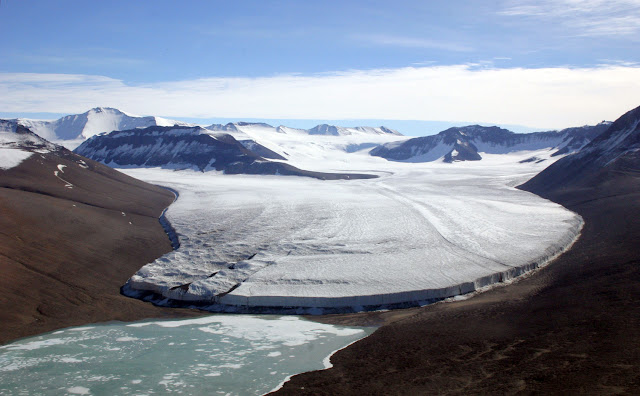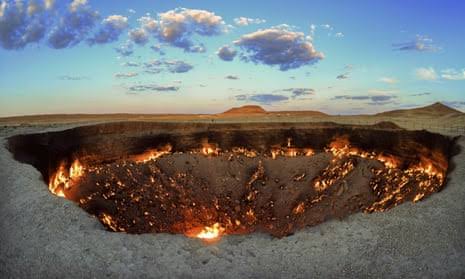Exploring the Most Extraordinary Places on the Planet
Introduction:
Earth, with its vast and varied landscapes, holds a myriad of wonders waiting to be discovered. Among the countless extraordinary places, there exists a category of locations so rare and exceptional that they stand out as the most unique on the planet. In this exploration, we will embark on a journey to discover the most rare place on Earth and delve into what makes it so extraordinary.
McMurdo Dry Valleys – An Icy Enigma:
Tucked away in the remote reaches of Antarctica lies a surreal and otherworldly landscape known as the McMurdo Dry Valleys. What makes this place truly rare is its extreme aridity. Unlike the rest of Antarctica, which is covered in ice, these valleys receive minimal snowfall, making them the driest place on Earth. The combination of frigid temperatures and the absence of liquid water creates an environment that closely resembles the conditions found on Mars.
The Dry Valleys are a peculiar paradox in the icy continent, where the air is bone-chillingly cold, yet the valleys themselves are devoid of snow and ice. This rare phenomenon has piqued the interest of scientists and researchers who see these valleys as a potential analog for the harsh conditions found in outer space.
Cueva de los Cristales – Crystal Wonderland:
Deep beneath the surface of the Earth in Naica, Mexico, lies an extraordinary cavern known as Cueva de los Cristales, or the Cave of Crystals. This subterranean marvel is home to some of the largest crystals ever discovered, with some reaching lengths of up to 39 feet (12 meters) and weighing several tons.
The conditions that led to the formation of these colossal crystals are exceptionally rare. The cave's chambers were filled with mineral-rich water heated by the Earth's internal heat, creating the perfect environment for crystals to slowly grow over thousands of years. The extreme heat and humidity inside the cave make it an inhospitable and challenging environment for exploration, adding to its rarity.
The Richat Structure – Eye of the Sahara:
In the heart of the Sahara Desert in Mauritania, Africa, lies an enigmatic geological formation known as the Richat Structure, or the Eye of the Sahara. This vast and perfectly circular structure spans approximately 30 miles (50 kilometers) in diameter and is visible even from space.
Despite its striking appearance, the origin of the Richat Structure remained a mystery for many years. Initially thought to be an impact crater, it is now believed to be the result of natural geological processes, including erosion and uplift. The combination of its unique shape, immense size, and the mystery surrounding its formation contribute to the Richat Structure's status as one of the most rare and intriguing places on Earth.
Socotra Island – Flora's Fantasy:
Off the coast of Yemen, in the Arabian Sea, lies an island that seems like it belongs to an alien world. Socotra Island is renowned for its unique and bizarre plant life, with nearly a third of its plant species found nowhere else on Earth. The Dragon's Blood Tree, with its umbrella-like canopy, and the cucumber tree, which produces oddly-shaped fruits, are just a couple of examples of the island's distinct flora.
The isolation of Socotra, combined with its harsh and arid climate, has led to the evolution of plant species found nowhere else on the planet. This biological uniqueness makes Socotra Island a rare gem in the realm of biodiversity.
Mount Roraima – A Floating Plateau:
Straddling the border of Venezuela, Brazil, and Guyana, Mount Roraima stands as a massive flat-topped plateau, resembling a floating island in the sky. This awe-inspiring formation is considered one of the oldest geological formations on Earth, dating back over two billion years.
Mount Roraima's sheer cliffs and unique ecosystem, featuring endemic plant and animal species, contribute to its rare status. The summit, often shrouded in mist and clouds, adds an element of mystery to this already extraordinary location.
The Door to Hell – Darvaza Gas Crater:
In the desolate Karakum Desert of Turkmenistan, a fiery pit known as the Darvaza Gas Crater, or "The Door to Hell," burns continuously, casting an eerie glow over the barren landscape. The crater formed in 1971 when a Soviet drilling rig collapsed, releasing natural gas. To prevent the spread of methane, the decision was made to set it ablaze, expecting the fire to burn out in a few weeks. However, it has been burning ever since.
The Door to Hell is a rare and surreal testament to human intervention gone awry, creating a fiery spectacle that has fascinated and intrigued visitors for decades.
The Mariana Trench – Ocean's Abyss:
Descending to depths of over 36,000 feet (10,994 meters), the Mariana Trench in the western Pacific Ocean is the deepest point on Earth. This immense trench is a subduction zone where one tectonic plate is forced beneath another, creating an otherworldly environment.
The extreme pressures and darkness of the trench make it one of the most challenging places on Earth to explore. Only a handful of manned and unmanned missions have ventured into its depths, revealing a world of mysterious creatures adapted to survive in this extreme environment.
The Conclusion:
Earth is a treasure trove of wonders, and these rare places offer a glimpse into the extraordinary diversity and complexity of our planet. Whether it's the icy desolation of the McMurdo Dry Valleys, the crystal-filled depths of Cueva de los Cristales, the botanical marvel of Socotra Island, the towering plateau of Mount Roraima, the fiery spectacle of the Door to Hell, or the abyssal mysteries of the Mariana Trench, each location holds a unique story written by the forces of nature.
As we continue to explore and understand these rare places, we gain a deeper appreciation for the marvels that make our planet a truly exceptional home. These rare gems remind us of the beauty and resilience of the natural world, urging us to preserve and protect these extraordinary places for generations to come.


Comments
Post a Comment